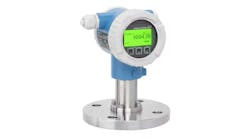The Environmental Protection Agency (EPA, www.epa.gov) issued a rule to clarify that permits are not required for transfers of water from one body of water to another. Such transfers include routing water through tunnels, channels, or natural stream courses for public water supplies, irrigation, power generation, flood control, and environmental restoration.
Thousands of water transfers currently in place across the country are essential to the nation”s water supply and infrastructure systems, according to the EPA. Whether a permit is needed under the Clean Water Act”s National Pollutant Discharge Elimination System (NPDES) has been an issue in numerous court cases in recent years. The final rule defines water transfers as an activity that conveys or connects waters of the United States without subjecting the transferred water to intervening industrial, municipal, or commercial use. Pollutants introduced by the water transfer activity itself to the water being transferred would still require an NPDES permit under today”s rule. Furthermore, this rule does not prevent states or tribes from using their own authorities to address water transfers, including the use of non-NPDES permits.
In 2004, the question of whether NPDES permits were necessary for water transfers went before the U.S. Supreme Court in South Florida Water Management District v. Miccosukee Tribe of Indians. The court did not rule directly on the issue, which left unresolved the uncertainty many felt about the need for an NPDES permit. The EPA issued an interpretive statement in 2005 explaining that Congress intended water resource-management agencies and other state authorities to oversee water transfers, not the NPDES permitting program. This rulemaking codifies that position.
Over the last several years, the EPA has been advancing water quality improvements related to water transfers and other hydrologic modifications through watershed planning and management measures. For example, last summer EPA issued the National Management Measures to Control Nonpoint Source Pollution from Hydromodification guidance that provides recommended best management practices for addressing the effects of changes in flow. The EPA says its recently released Handbook for Developing Watershed Plans to Restore and Protect Our Waters can assist communities as they analyze water quality priorities in their watersheds and identify management measures to reduce causes of impairments.
For more information on the EPA’s new water transfer rule, visit www.epa.gov/npdes/agriculture.

